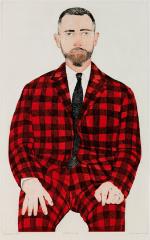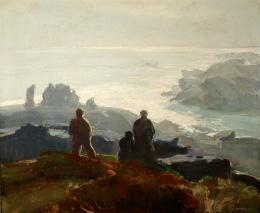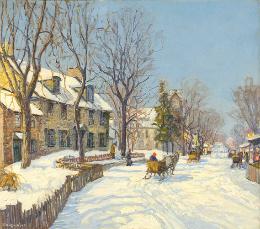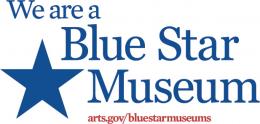March 29 - June 24, 2012
Mark Adams and Beth Van Hoesen chose realism at a time when other artists were creating abstract works of art. Many of the lithographs and etchings in the exhibition are up-close looks at nature and everyday objects. Mark Adam’s large prints present single objects— a glass jar, cigar box or martini glass at a size much bigger than real life. Van Hoesen’s attention is more often focused on nature rather than manufactured or handmade objects. She did, at times, create larger than life-size lithographs of flowers—but her animals and flowers were more frequently actual size or smaller, with skillfully drawn and etched details of texture and pattern. Mark Adams was a frequent subject of Van Hoesen’s work, and the exhibition includes three portraits of Adams—all in his checkered suit.

August 22, 2011 - May 20, 2012
Jay Connaway (1893-1970) painted in an era marked by the economic, political and social upheaval of World War I, the Great Depression and World War II. He painted in a bold Impressionist style and critics in the 1920s called him “the greatest sea painter since Winslow Homer.”
Under the patronage of Bartlett Arkell, president of Beech-Nut Corporation and founder of the Canajoharie Library and Art Gallery, Connaway painted in Brittany, France. Arkell later provided Connaway with a house on the remote island of Monhegan, Maine. This exhibition includes paintings inspired by both the coastline of Monhegan Island and the landscape of Vermont.

August 26, 2011 - March 24, 2012
American Artists in the 1920s and 1930s painted in a broad range of Realist, Impressionist and modern styles. Most of the paintings in this exhibition were purchased by Bartlett Arkell, the founder and first president of Beech-Nut Packing Company. Arkell began to collect paintings for the museum in the mid-1920s. This was a time when many American painters continued to work in styles influenced by the French Impressionists, while others were encouraged by Ashcan School artists to explore greater realism. During the 1930s, American artists became more interested in organic and geometric abstraction, but abstract art had a limited appeal with the public. Arkell favored Realist and Impressionist works that presented nostalgic views of America unchanged by industry - not avant-garde art. He acquired paintings by Impressionist and Ashcan School artists who had once shocked people with their controversial subject matter, but by the 1920s were hailed as America's greatest artists.






